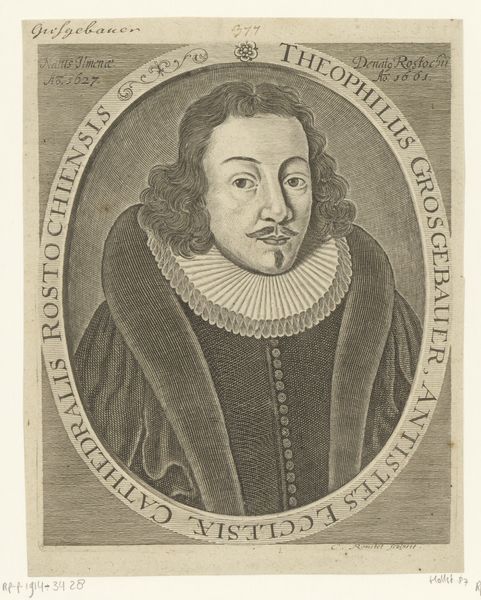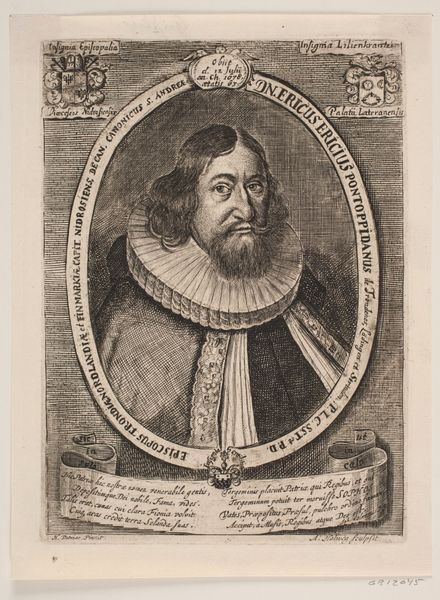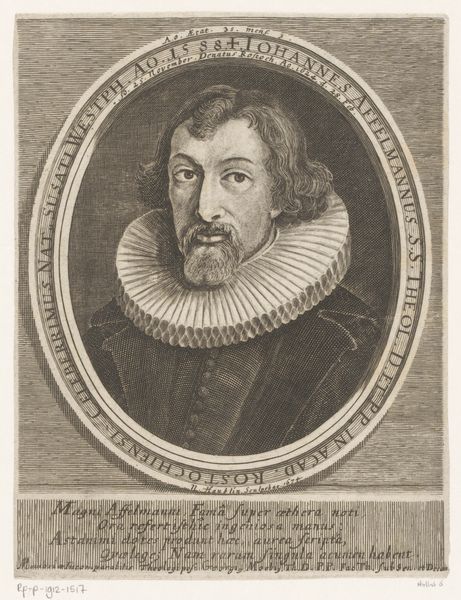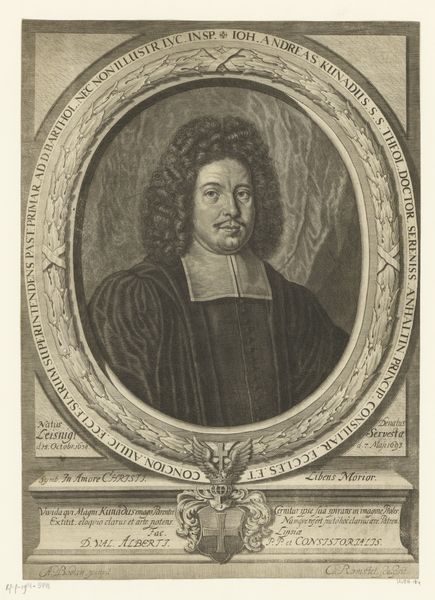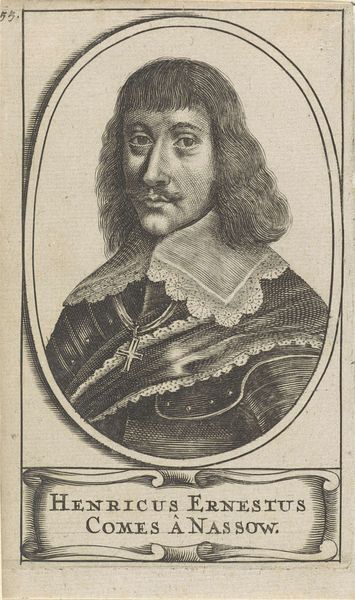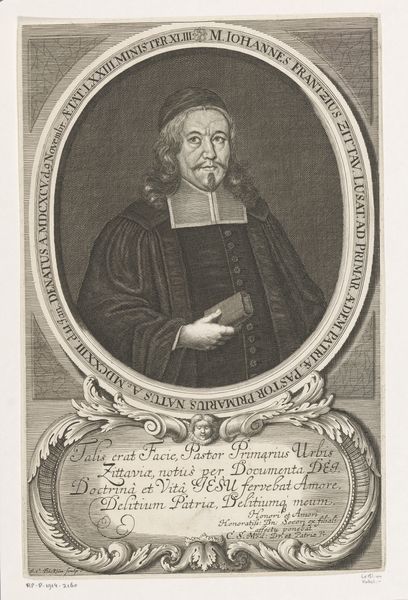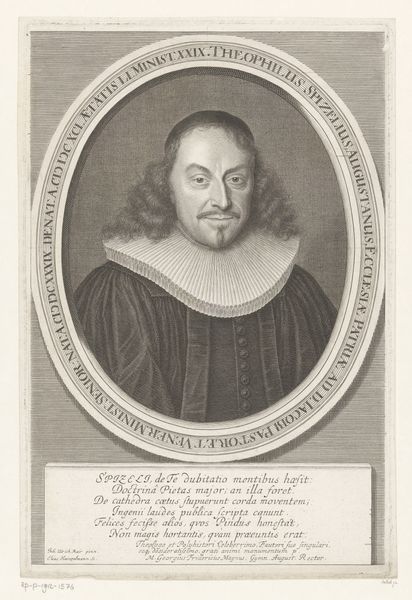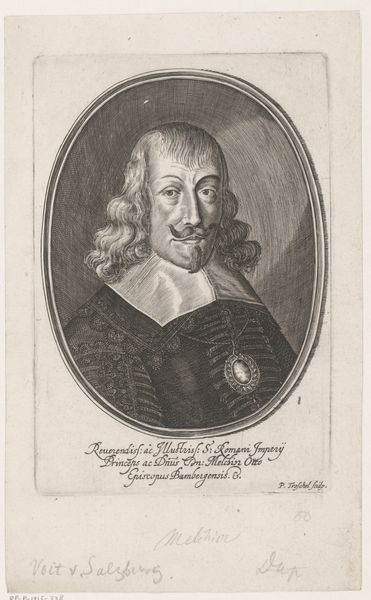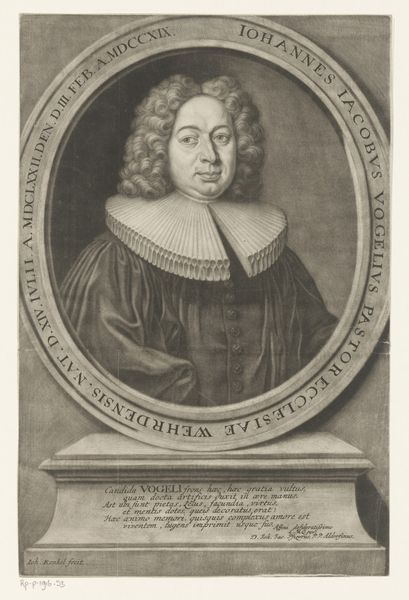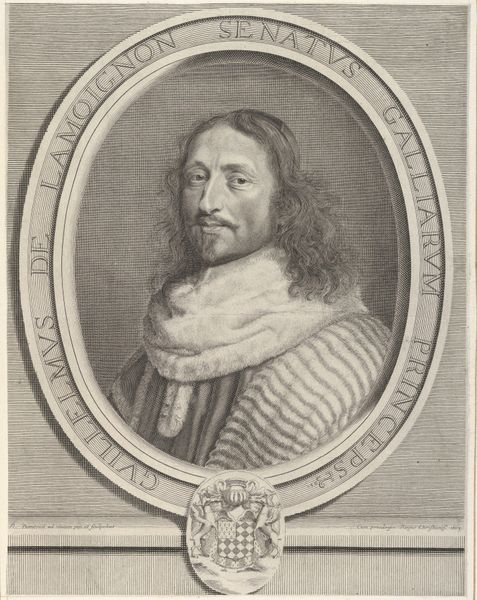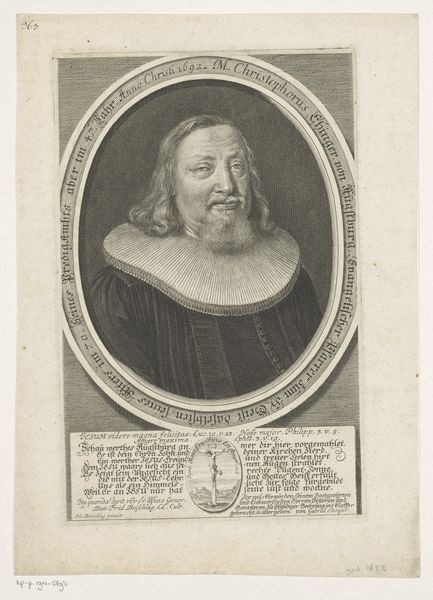
print, metal, intaglio, engraving
#
portrait
#
baroque
# print
#
metal
#
intaglio
#
old engraving style
#
caricature
#
engraving
Dimensions: height 156 mm, width 91 mm
Copyright: Rijks Museum: Open Domain
Editor: This print, a portrait of Andreas Christoph Schubart dating sometime between 1665 and 1721, is rendered with an intriguing, almost clinical detail. The artist, Christian Romstet, really seemed to highlight the textures and lines of his subject’s face, clothing and hair with very precise engraving techniques. What strikes you most about it? Curator: What I find interesting is considering how the materiality of the print – the metal plate, the ink, the paper – relates to the depicted sitter's social standing. Notice the ruff collar, a potent symbol of status, painstakingly reproduced through repetitive, skilled labor on the plate. We must question the relationship between the accessibility of printmaking and the exclusivity suggested by the image. Was this intended for a wide audience or a select few, perhaps those within Schubart's own circles? Editor: So, you're suggesting we think about not just what’s *in* the print, but how the print itself was made, and what that says about the society at the time? The choice of engraving as a process, how accessible that would've been to different classes. Curator: Precisely. Consider the labor involved in creating such a detailed engraving. The artist’s time, the cost of materials. Each line incised into the metal represents hours of focused work. This brings us to the economic and social framework that supported this kind of production. The printed image then circulates, becoming a commodity itself, adding another layer to its meaning. How does that change how we view this "Portrait"? Editor: It definitely gives me a deeper appreciation. Seeing it as a product of a complex social and economic web makes it feel much less like a simple image. Now I am also considering where this particular print would have been consumed: who would have collected it? Curator: Exactly! Thinking about materiality helps us move beyond just aesthetics to consider the artwork's complete journey and its relationship to broader systems of labor, value, and social hierarchy. Editor: Thanks, this has really opened my eyes to a different way of analyzing art. I'll be sure to consider the "making of" and the "circulation of" in future observations.
Comments
No comments
Be the first to comment and join the conversation on the ultimate creative platform.

